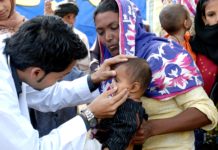
An explainer on why the Middle East Respiratory Syndrome (MERS) is such a feared disease
South Korea’s first case of Middle East Respiratory Syndrome (MERS) since 2015 has alerted the world to the risk of yet another outbreak of the deadly respiratory infection. Usually of animal origin, MERS is dreaded because of its high fatality – about 35% patients die. For the rest of the world it is a cause of concern because in this day and age of fast air travel, it is a matter of a few hours for a virus to spread from one country to another.
A lowdown on the disease, the case and its implications.
What is MERS?
MERS is a viral infection spread by a coronavirus (CoV) that was identified only in 2012 in Saudi Arabia. The recent provenance means that the virus is ill understood and therefore feared. The fatality rate has only added to its aura. There are however a long line of coronaviruses that we have been familiar with for long – the common cold virus and the Severe Acure Respiratory Syndrome (SARS) virus. In the past the largest MERS outbreaks seen in Saudi Arabia, United Arab Emirates, and the Republic of Korea.
What are the symptoms?
According to WHO, typical MERS symptoms include fever, cough and shortness of breath. Pneumonia is common, but not always present. Gastrointestinal symptoms, including diarrhoea, have also been reported. Some laboratory-confirmed cases of MERS-CoV infection are reported as asymptomatic, meaning that they do not have any clinical symptoms, yet they are positive for MERS following a laboratory test. Most of these asymptomatic cases have been detected following aggressive contact tracing of a laboratory-confirmed case.
Since 2012, 27 countries have reported cases of MERS including Algeria, Austria, Bahrain, China, Egypt, France, Germany, Greece, Islamic Republic of Iran, Italy
What is the present reason for worry?
A 61 year old man in South Korea who returned from a three day business trip to Kuwait on Friday has been diagnosed with MERS. According to a statement from the Korea Centers for Disease Control and Prevention (KCDC), authorities have traced and separated 20 people who have come in close contact with the infected person. Each of these people will now have to be monitored closely to ensure they do not infect any more people. Travel restrictions may also need to be imposed.
How does MERS spread?
It spreads by close contact between humans. Tending to an infected patient without protection is a perfect scenario for transmission. It is very common for several MERS cases to be reported from a hospital or other healthcare facility with poor infection control measures. WHO says: “The route of transmission from animals to humans is not fully understood, but dromedary camels are a major reservoir host for MERS-CoV and an animal source of infection in humans. Strains of MERS-CoV that are identical to human strains have been isolated from dromedaries in several countries, including Egypt, Oman, Qatar, and Saudi Arabia.”
Which countries have seen MERS outbreaks so far?
Since 2012, 27 countries have reported cases of MERS including Algeria, Austria, Bahrain, China, Egypt, France, Germany, Greece, Islamic Republic of Iran, Italy, Jordan, Kuwait, Lebanon, Malaysia, the Netherlands, Oman, Philippines, Qatar, Republic of Korea, Kingdom of Saudi Arabia, Thailand, Tunisia, Turkey, United Arab Emirates, United Kingdom, United States, and Yemen. Approximately 80% of human cases have been reported by Saudi Arabia











